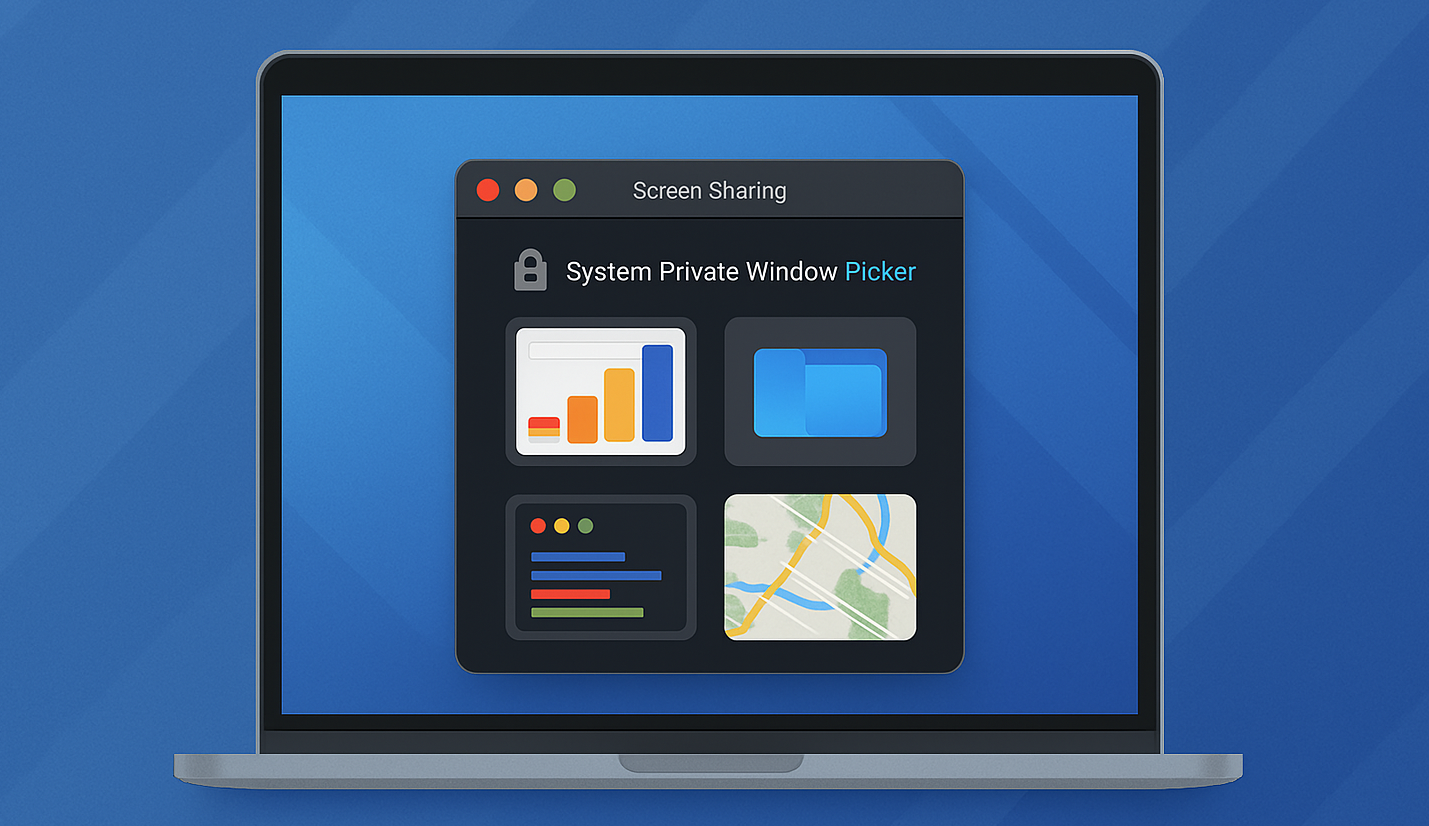
Screen Sharing Got Smarter (and More Private) on macOS: Understanding the System Private Window Picker
Screen sharing and screen recording are part of our daily lives now, whether we are making work presentations, providing remote support, creating tutorials, or chatting with friends and family.
Historically, macOS used a system level Screen Recording permission. The prompt for non Apple apps (Chrome, Zoom. etc.) looked like this:
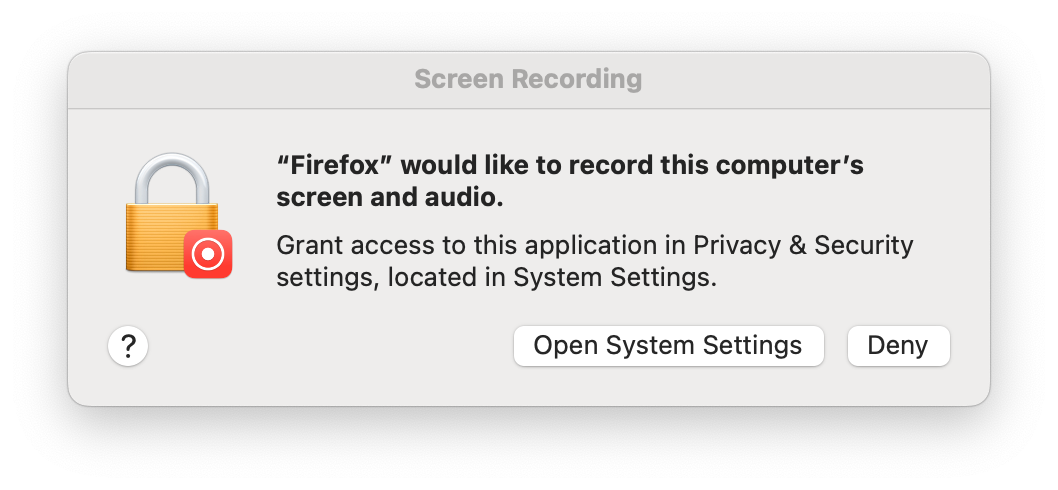
Safari, being a native Apple app, was more privileged. Users only saw a "Allow"/ "Don't Allow" prompt.
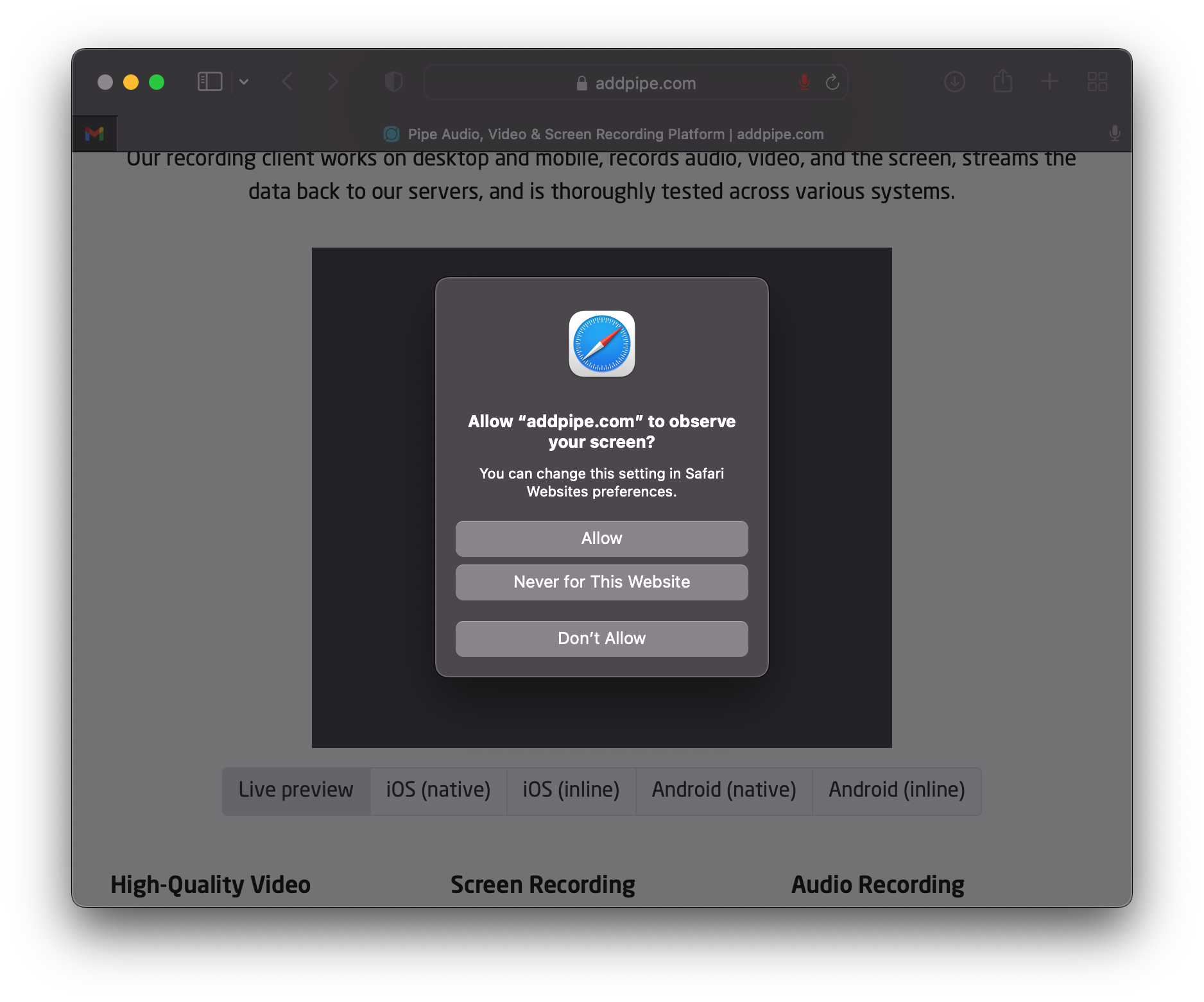
However, starting with macOS Ventura 13, Apple has introduced a more privacy-focused approach: a new system-level user interface for managing exactly what you share. Let's call it the "System Private Window Picker" for clarity (even though Apple may not officially use this specific term, and may refer to it as the Screen Sharing Picker).
This new feature changes how macOS handles screen access, putting you in control and reducing the chance of screen sharing stuff you didn't mean to.
In Ventura, this feature was only available internally for the Apple ecosystem apps (Safari and FaceTime), but in macOS Sonoma 14, the API behind it (ScreenCaptureKit and SCContentSharingPicker) became publicly available so more apps were able to implement it.
Without further ado, let's break down what it is, who's using it, and what it means for your apps.
Meet the New Gatekeeper: The OS-Level Screen Sharing UI
Instead of an app simply getting all-out permission to record everything upon your approval, recent macOS versions (starting with Ventura) show you a simple overlay right before the recording or sharing actually begins.
- What it looks like: You'll see an overlay displaying over your currently open application windows (Share This Window) or an option for sharing the entire screen(s).
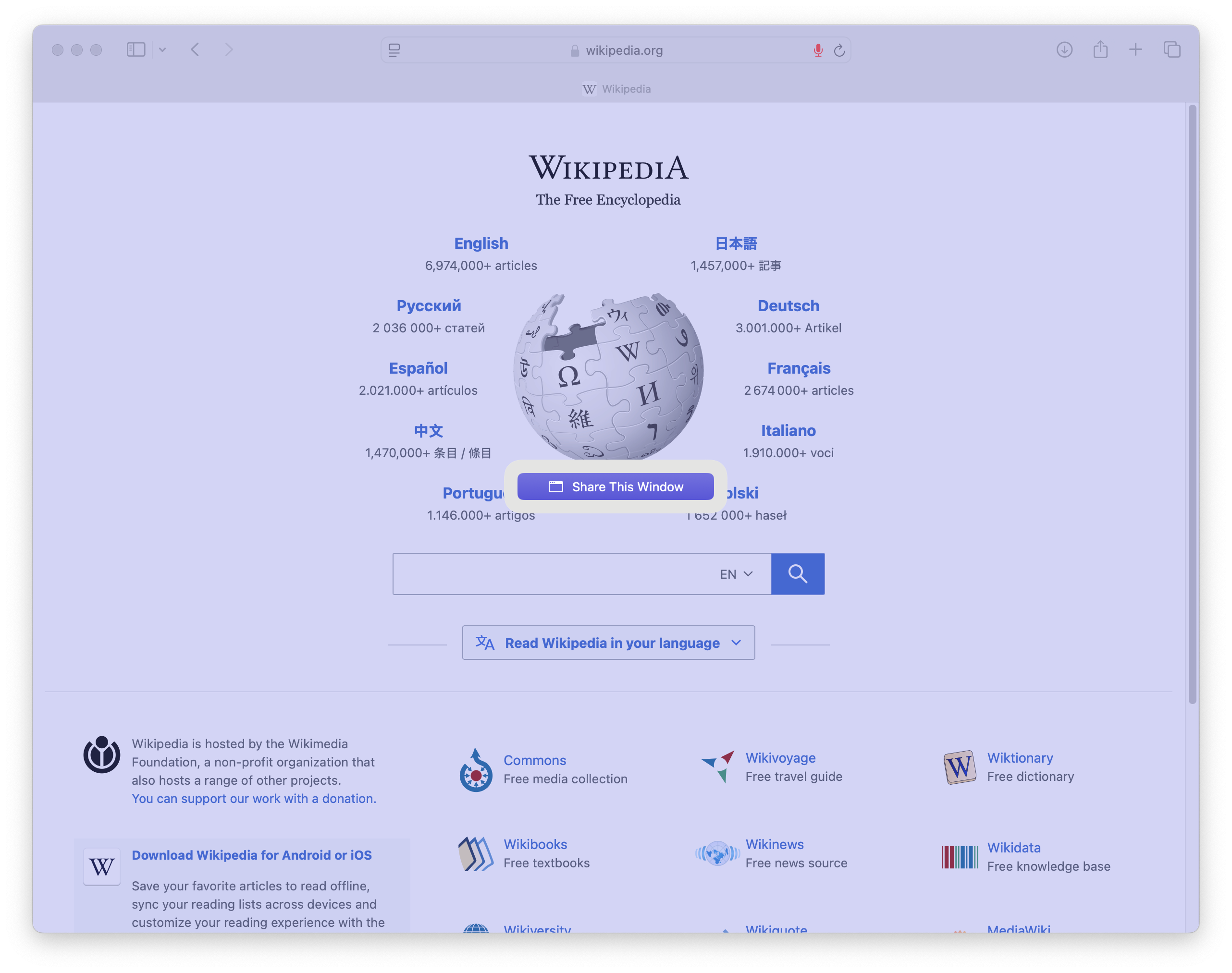
- How it works: You pick the specific window(s) or screen(s) you want to share or record directly from this system interface. Only what you select is then passed on to the application requesting access.
- The Goal: Enhanced privacy and granular control. You choose exactly what you want to share, so you're less likely to expose personal info from other apps.
What Apps Are Using the System Private Window Picker?
As expected, Apple's own apps use this native macOS feature since macOS Ventura 13. You'll encounter this picker when sharing your screen via:
- FaceTime: When you share your screen during a call.
- Safari: When sites ask for screen sharing (like for web-based meetings or support).
However, its adoption isn't limited to Apple's ecosystem. Once the API behind it became publicly available with macOS Sonoma 14, major third-party applications integrated it. A good example is:
- Mozilla Firefox: When you grant a website permission to record or view your screen, starting with Firefox 132, the request is passed to the new API behind the macOS System Private Window Picker. Worth mentioning that at that time, Firefox 132 specifically added support for macOS 15 and later, with support for macOS 14 planned for future releases.
For the more technically inclined, here is a quick overview of the timeline:
| Milestone | Details |
|---|---|
| ScreenCaptureKit introduced in macOS Monterey 12.3 | High-performance screen capture framework for macOS applications. |
| ScreenCaptureKit and SCContentSharingPicker used internally on macOS 13 Ventura | Used internally for Apple ecosystem apps like Safari. |
| SCContentSharingPicker made public with macOS 14 Sonoma | System-level picker UI for selecting windows/displays to share. |
| macOS 15 Sequoia released (September 2024) | Deprecated older screen-sharing APIs, prompting browser updates. |
The Warning Sign: "Bypass the System Private Window Picker"
What happens when an application isn't updated to use this new, privacy-focused UI? Starting with macOS Sequoia 15, you will be given a clear heads-up.
If an app uses the old method to request screen recording or via its own UI, you'll be prompted by the warning: "[APP] is requesting to bypass the system private window picker"
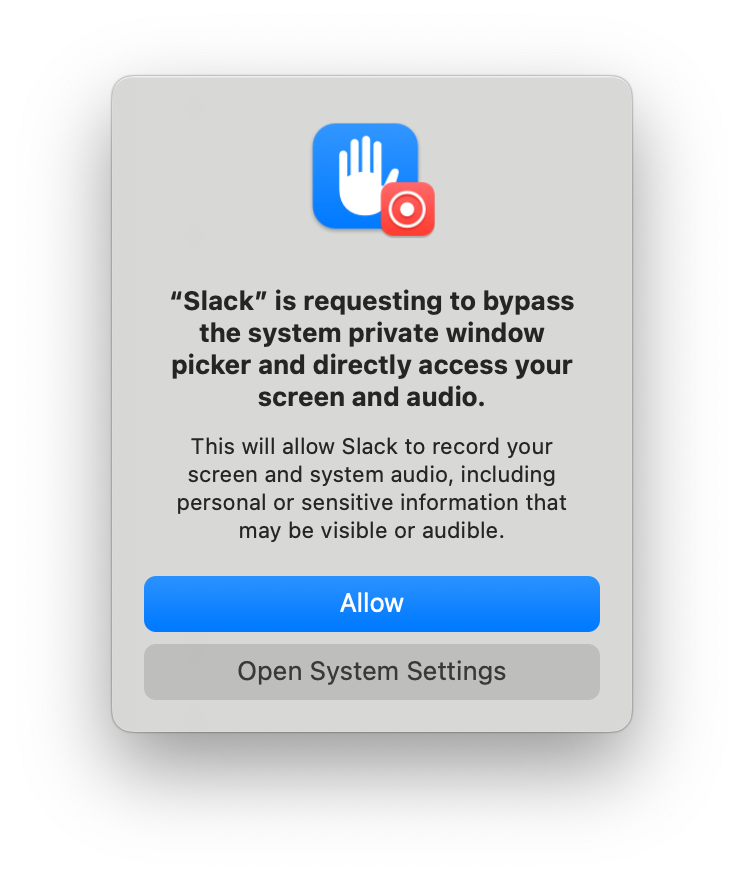
This happens because Apple deprecated older screen sharing methods with macOS Sequoia 15.
What does this mean? This warning explicitly tells you the app requests broader access than the new system allows by default. It wants permission to capture anything on your screen rather than going through the System Private Window Picker's granular, user-controlled selection process.
While sometimes necessary for certain types of apps (like specialized screen capture tools), granting this permission carries a higher potential privacy risk. You are giving the app the technical capability to see more than you might strictly intend to share at any moment.
Power Feature: Share Multiple Windows
One cool feature of this new system picker is the ability to select and share multiple windows at once.
Let's imagine you are on a video call and want to show your presentation and your speaker notes in a separate window, but you don't want your email or messaging apps visible. With the new screen sharing system private window picker, you can add the presentation and notes window using the "Add windows" button from the Presenter Overlay located in the top right of the screen.
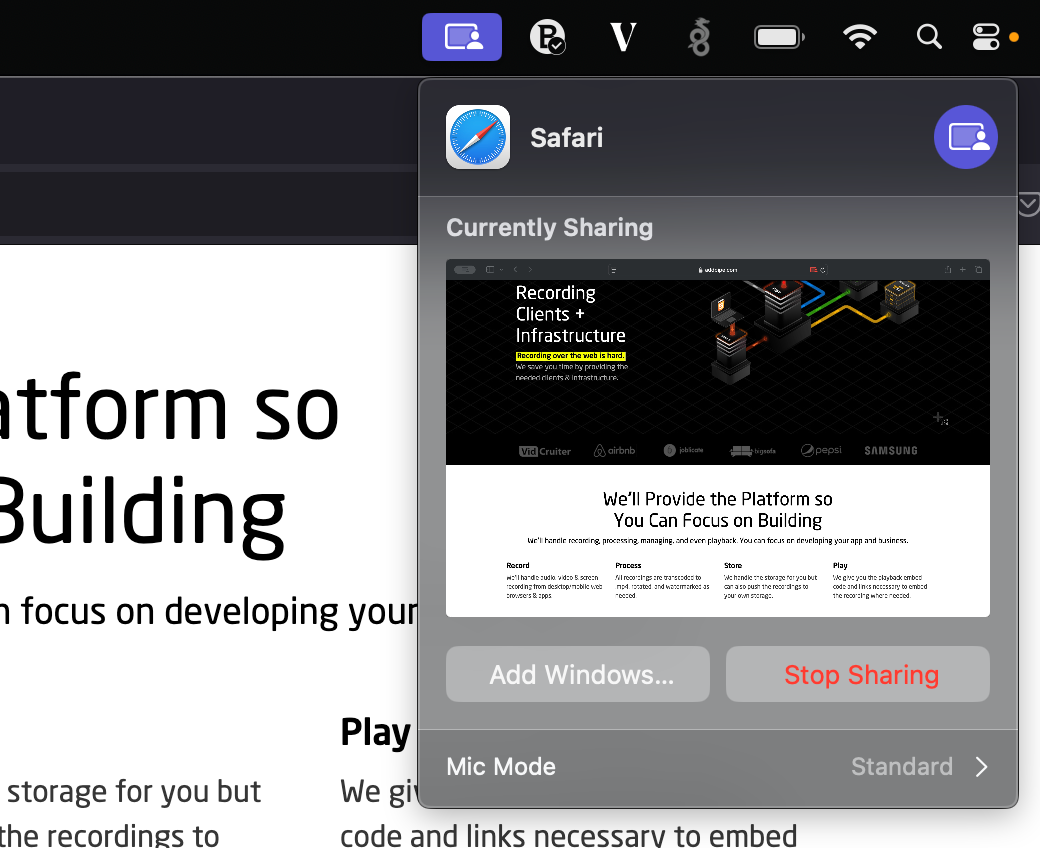
The requesting app will only get streams from the selected windows while everything else on your desktop remains private.
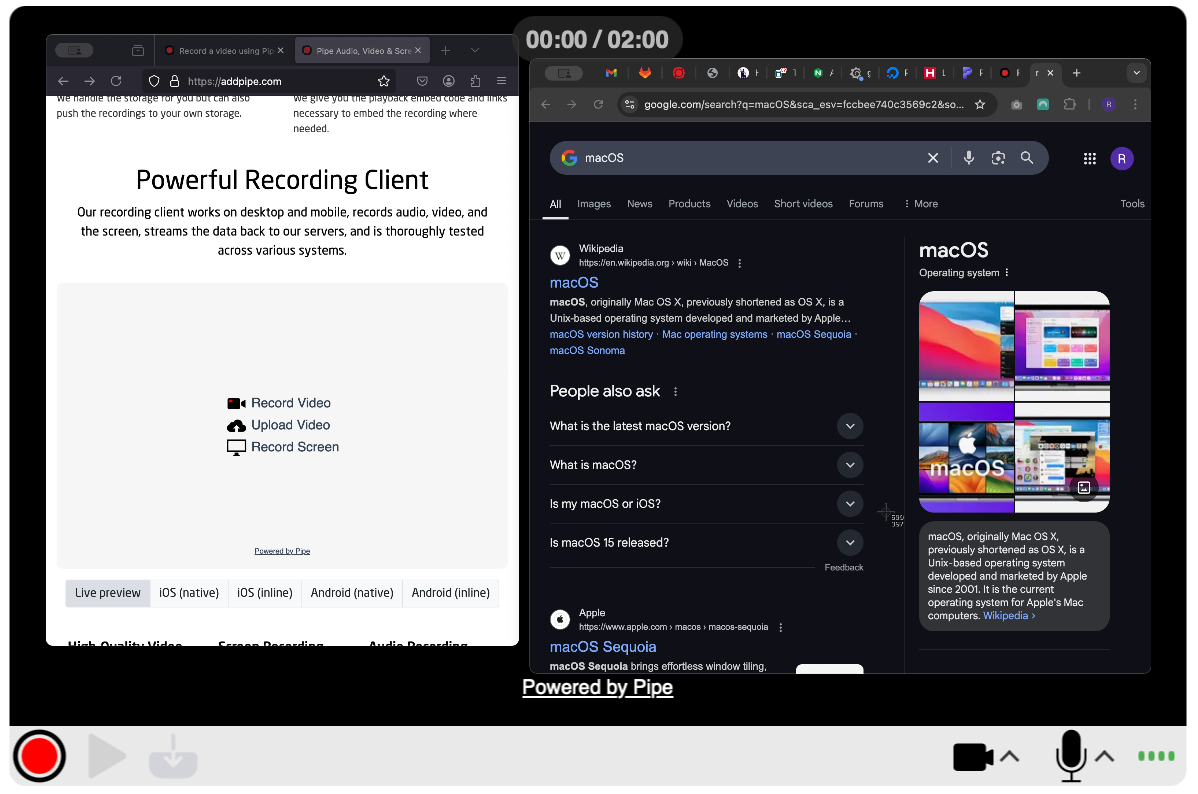
This is a huge improvement over the old screen sharing method, which restricted you to sharing one window or your entire messy desktop.
Why This Matters: Putting You in Control
The rollout of the System Private Window Picker is an excellent change for macOS users:
- Better Privacy: Reduces the chance of accidentally sharing private info.
- Granular Control: Let's you share exactly what you mean to share.
- Consistency: Makes the screen sharing experience smoother across apps.
While you might encounter the "bypass" warning with other apps, knowing what it means can help you decide whether to grant screen recording permissions.
This change shows how Apple is working to give users finer control over their data and screen content in an increasingly connected world.
Keep an eye out for this private window picker. It's a small UI tool with huge implications for your digital privacy.
